How to Ripen Raw Tomatoes A Complete Guide.
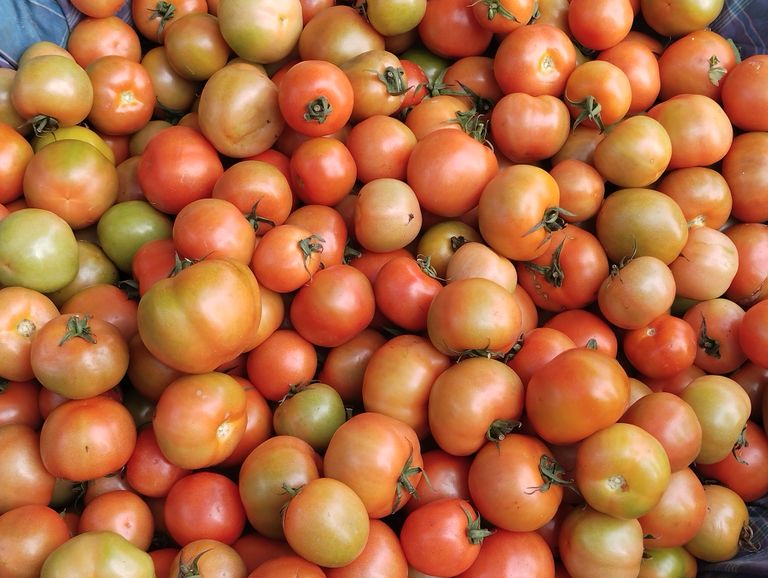
Tomatoes are a versatile and delicious fruit enjoyed worldwide. However, unripe or green tomatoes may lack the sweetness and flavor we love. Whether you’ve harvested your tomatoes early or bought raw ones, learning how to ripen them at home can ensure a fresh, tasty experience. Here’s a comprehensive guide to ripening raw tomatoes efficiently and naturally.
Why Ripen Raw Tomatoes?
Tomatoes often need ripening when they’re picked before maturity to avoid damage from pests, harsh weather, or transportation. Ripening enhances their color, texture, and flavor, making them more appealing and nutritious.
Factors Affecting the Ripening Process
Before diving into methods, it’s essential to understand the factors influencing tomato ripening:
Ethylene Gas: This natural hormone speeds up ripening. Tomatoes release ethylene gas as they mature.
Temperature: Ideal ripening temperatures are between 20°C and 25°C (68°F to 77°F).
Light: Contrary to popular belief, tomatoes don’t need direct sunlight to ripen; warmth is more important.
Humidity: High humidity helps prevent the tomatoes from drying out during the process.
How to Ripen Raw Tomatoes at Home
- Ripening in a Paper Bag
Using a paper bag is one of the easiest ways to ripen raw tomatoes.
Steps:
Place the raw tomatoes in a paper bag.
Add a ripe banana or apple to the bag. These fruits release ethylene gas, accelerating the ripening process.
Loosely close the bag to trap the gas while allowing airflow.
Store the bag in a warm area (around 20°C to 25°C).
Check daily and remove ripe tomatoes to prevent over-ripening.
- Ripening in a Box or Tray
If you have many tomatoes, ripening them in a box or tray is ideal.
Steps:
Line a shallow box or tray with newspaper.
Arrange the raw tomatoes in a single layer with the stem side facing down.
Cover them lightly with another layer of newspaper.
Place the box in a warm, dry spot.
Inspect daily and remove ripe ones.
- Ripening on the Vine
If the tomato plants are still alive but have green fruit, you can ripen them on the vine indoors.
Steps:
Pull up the entire plant if frost or harsh weather is expected.
Hang the plant upside down in a warm, dry area like a garage or basement.
The tomatoes will continue ripening on the vine.
- Ripening on a Windowsill
This is a simple method for small batches of tomatoes.
Steps:
Place the tomatoes on a windowsill with indirect sunlight.
Position them stem-side down to reduce the risk of bruising.
Turn them occasionally for even ripening.
- Using a Ripening Dome
A ripening dome is a DIY solution for ripening tomatoes faster.
Steps:
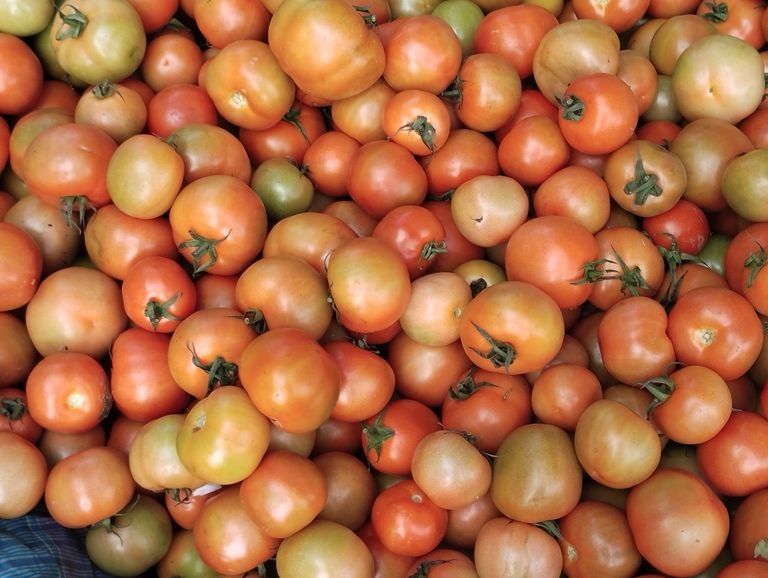
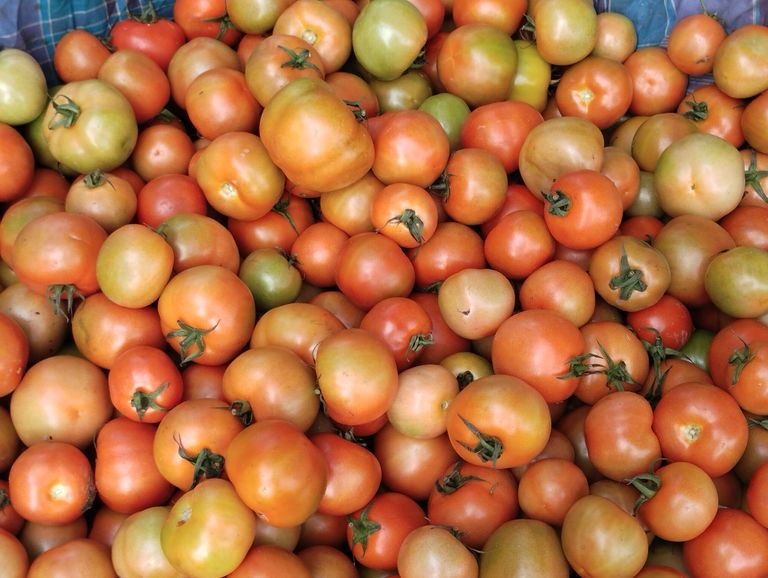
Place the raw tomatoes in a bowl or container.
Cover the container with a plastic or glass dome (or plastic wrap) to trap ethylene gas.
Keep the container in a warm area, but avoid direct sunlight.
Check daily to monitor progress.
Tips for Ripening Tomatoes Successfully
Avoid refrigerating raw tomatoes, as cold temperatures can halt the ripening process.
Handle tomatoes gently to prevent bruising, which can lead to spoilage.
Use breathable materials like paper bags or cloth to prevent moisture buildup.
Grouping tomatoes with other ripe fruits (bananas, apples) can significantly speed up the process.
What to Do with Green Tomatoes That Won’t Ripen
Sometimes, tomatoes remain stubbornly green despite your best efforts. In such cases, consider using them in recipes like fried green tomatoes, green tomato chutney, or pickles.
Ripening raw tomatoes at home is simple and rewarding. By following the methods outlined above, you can enjoy fresh, flavorful tomatoes whenever you need them. Whether you’re preserving a garden harvest or salvaging store-bought tomatoes, these techniques ensure perfect ripeness every time.
Fresh Ripe Tomato Salad Recipe: A Burst of Flavor in Every Bite
Salads are a cornerstone of healthy and delicious eating. Among the many varieties, a fresh ripe tomato salad holds a special place. Simple, vibrant, and bursting with natural flavors, it’s a dish that can elevate any meal. In this blog, we’ll explore how to make a refreshing ripe tomato salad, perfect for any occasion.
Why Choose Ripe Tomatoes?
Ripe tomatoes are the heart and soul of this salad. When tomatoes are fully ripe, they’re rich in natural sweetness, juiciness, and flavor. They also pack essential nutrients like vitamin C, potassium, and antioxidants such as lycopene. By choosing fresh, ripe tomatoes, you’re not just preparing a dish—you’re embracing the essence of seasonal eating.
Ingredients for Ripe Tomato Salad
The beauty of this salad lies in its simplicity. You only need a handful of ingredients to create a masterpiece:
Ripe tomatoes (4-5 medium-sized): Choose vibrant red ones for the best flavor.
Red onion (1 small): Thinly sliced for a subtle sharpness.
Fresh basil leaves (a handful): Adds a fragrant touch.
Olive oil (2-3 tablespoons): Enhances the natural flavors of the ingredients.
Balsamic vinegar (1-2 tablespoons): For a tangy, sweet kick.
Salt and pepper: To taste.
Optional: Crumbled feta or fresh mozzarella for a creamy addition.
Step-by-Step Recipe
Prepare the Tomatoes
Wash the tomatoes thoroughly and pat them dry. Slice them into wedges or thick slices, depending on your preference. The key is to keep them chunky to retain their juicy texture.
Slice the Onions
Peel the red onion and slice it thinly. If the flavor is too strong, soak the slices in cold water for 10 minutes before draining.
Combine the Ingredients
In a large salad bowl, arrange the tomato slices, red onion, and fresh basil leaves. Tear the basil leaves gently with your hands to release their aroma.
Make the Dressing
In a small bowl, whisk together olive oil, balsamic vinegar, salt, and pepper. Adjust the seasoning as per your taste.
Toss and Serve
Drizzle the dressing over the salad. Gently toss to coat all the ingredients evenly. If you’re using cheese, sprinkle it on top just before serving.
Tips for the Perfect Ripe Tomato Salad
Use seasonal tomatoes: Fresh, locally-sourced tomatoes are unbeatable in taste and texture.
Don’t refrigerate ripe tomatoes: Cold temperatures can dull their flavor. Instead, store them at room temperature.
Experiment with herbs: While basil is classic, you can also try parsley, cilantro, or mint for a different twist.
Add a crunch: Toss in some toasted nuts or seeds for texture.
Serving Suggestions
This ripe tomato salad is incredibly versatile. You can serve it:
As a side dish with grilled meats, fish, or roasted vegetables.
On toasted bread for a bruschetta-style snack.
Tossed with cooked pasta for a quick, flavorful meal.
Health Benefits of Ripe Tomato Salad
This salad is not just delicious but also nutritious. Here’s why:
Rich in Antioxidants: Tomatoes are high in lycopene, which helps combat oxidative stress and reduces the risk of chronic diseases.
Heart-Healthy Fats: Olive oil provides monounsaturated fats that support cardiovascular health.
Low in Calories: This salad is light yet filling, making it perfect for weight management.
Hydration Boost: With their high water content, tomatoes help keep you hydrated.
Variations to Try
Mediterranean Twist: Add olives, cucumber, and a sprinkle of oregano for a Mediterranean vibe.
Spicy Kick: Include a dash of chili flakes or sliced jalapeños for some heat.
Sweet and Savory: Mix in some diced mango or strawberries for a sweet contrast.
Final Thoughts
A ripe tomato salad is more than just a dish—it’s an experience of fresh flavors, vibrant colors, and nourishing goodness. Whether you’re looking for a quick side dish or a light meal, this salad is a go-to recipe that never disappoints.
So, grab some fresh tomatoes, whip up this salad, and enjoy the simplicity and elegance of a timeless classic!
What’s your favorite way to enjoy ripe tomato salad? Share your thoughts and tips in the comments below.
Delicious Tomato Recipes to Savor Every Day
Tomatoes are one of the most versatile ingredients in the culinary world. Their tangy, sweet, and umami-rich flavor profile makes them an excellent addition to countless recipes. Whether you’re using fresh, sun-dried, or canned tomatoes, they can transform any dish into something extraordinary. Below, we explore some easy-to-follow and mouthwatering tomato recipes that can make your meals unforgettable.
- Classic Tomato Soup
A warm bowl of tomato soup is comfort food at its finest. It’s perfect for chilly evenings or as a light appetizer.
Ingredients:
5 ripe tomatoes (or 3 cups canned tomatoes)
2 tbsp olive oil
1 onion, chopped
2 garlic cloves, minced
1 cup vegetable or chicken broth
Salt and pepper to taste
1/2 cup heavy cream (optional)
Instructions:
Heat olive oil in a pot and sauté the onions and garlic until fragrant.
Add the tomatoes and cook for 10 minutes.
Pour in the broth and simmer for 15 minutes.
Blend the mixture until smooth.
Season with salt and pepper, then add cream for richness if desired. Serve hot with crusty bread.
- Tomato and Basil Pasta
This quick pasta dish is a celebration of simple yet robust Italian flavors.
Ingredients:
300g pasta of your choice
4 medium-sized tomatoes, chopped
2 tbsp olive oil
3 garlic cloves, minced
A handful of fresh basil leaves
Salt, pepper, and chili flakes to taste
Parmesan cheese for garnish
Instructions:
Cook the pasta according to package instructions. Drain and set aside.
Heat olive oil in a skillet and sauté the garlic.
Add the tomatoes and cook until they soften.
Toss the cooked pasta into the skillet and mix well.
Season with salt, pepper, and chili flakes. Garnish with basil and Parmesan before serving.
- Stuffed Tomatoes
Stuffed tomatoes are a delightful way to enjoy a hearty and nutritious meal.
Ingredients:
6 large tomatoes
1 cup cooked rice or quinoa
1/2 cup cooked ground beef or mushrooms (for a vegetarian option)
1/4 cup chopped onion
1/2 cup shredded mozzarella cheese
2 tbsp olive oil
Salt, pepper, and Italian herbs to taste
Instructions:
Preheat your oven to 375°F (190°C).
Cut the tops off the tomatoes and scoop out the pulp. Save the pulp for later.
In a bowl, mix the rice, ground beef or mushrooms, onion, tomato pulp, and seasonings.
Stuff the tomatoes with the mixture and place them on a baking dish.
Drizzle with olive oil and sprinkle mozzarella on top.
Bake for 20-25 minutes or until the cheese is golden and bubbly.
- Tomato Salad with Feta and Olives
A refreshing salad that’s perfect for summer lunches or as a side dish.
Ingredients:
4 ripe tomatoes, sliced
1/2 cup crumbled feta cheese
1/4 cup sliced black or green olives
2 tbsp olive oil
1 tbsp balsamic vinegar
Fresh parsley or basil for garnish
Salt and pepper to taste
Instructions:
Arrange the tomato slices on a plate.
Sprinkle the feta cheese and olives on top.
Drizzle with olive oil and balsamic vinegar.
Garnish with fresh herbs and season with salt and pepper.
- Homemade Tomato Chutney
This tangy and sweet condiment pairs wonderfully with bread, cheese, or grilled meat.
Ingredients:
6 large tomatoes, chopped
1 onion, finely chopped
2 garlic cloves, minced
1/2 cup sugar
1/4 cup white vinegar
1 tsp mustard seeds
1/2 tsp chili powder
1 tbsp olive oil
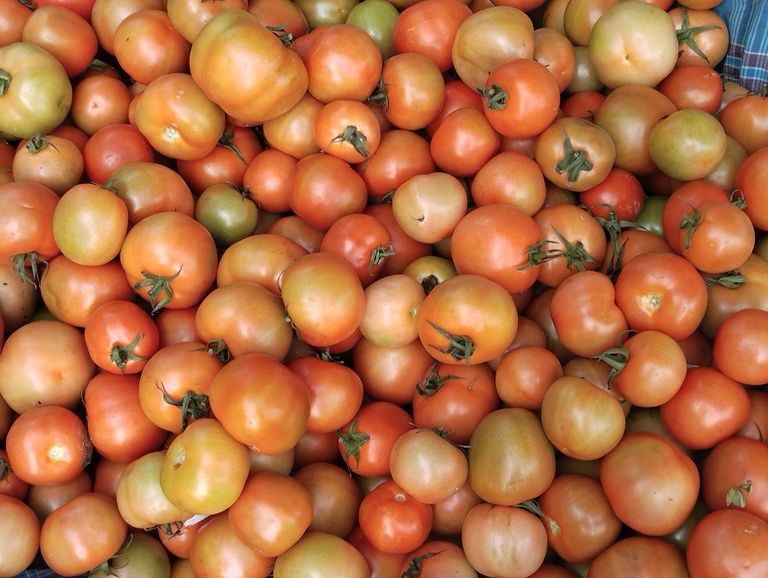
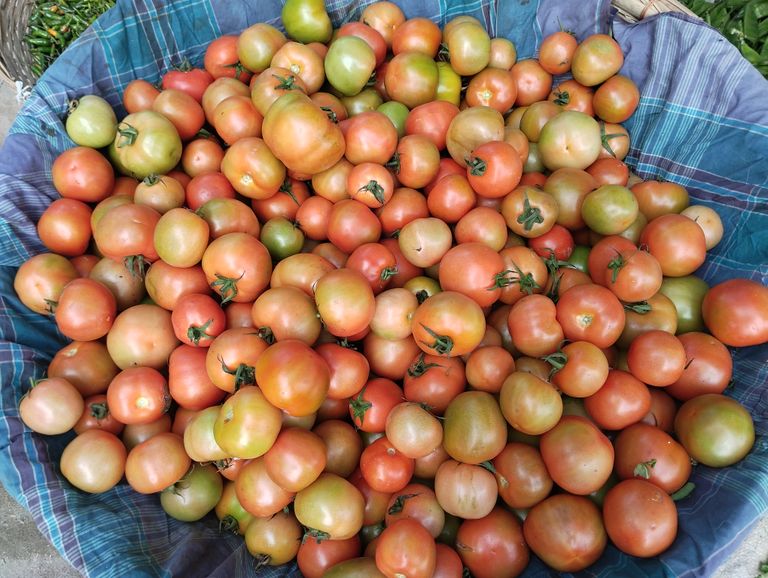
Instructions:
Heat olive oil in a pan and sauté the onion, garlic, and mustard seeds.
Add the tomatoes, sugar, vinegar, and chili powder.
Simmer on low heat for 30-40 minutes, stirring occasionally.
Once thickened, remove from heat and let cool before storing in jars.
- Spicy Tomato Curry
This Indian-inspired dish is packed with spices and perfect for pairing with rice or bread.
Ingredients:
4 ripe tomatoes, pureed
1 onion, finely chopped
2 tbsp vegetable oil
1 tsp cumin seeds
1 tsp turmeric powder
1 tsp garam masala
1 tsp chili powder
Salt to taste
Fresh cilantro for garnish
Instructions:
Heat oil in a pan and add cumin seeds until they splutter.
Add the onion and sauté until golden.
Stir in the tomato puree, turmeric, chili powder, and garam masala.
Cook for 15 minutes until the sauce thickens.
Season with salt and garnish with cilantro.
Final Thoughts
Tomatoes are an essential ingredient that can elevate any dish, from hearty soups to light salads. These recipes are easy to customize, so feel free to experiment with additional herbs, spices, or proteins. Whether you’re a seasoned chef or a beginner in the kitchen, these tomato recipes are sure to impress!
Enjoy the vibrant flavors of tomatoes in your cooking, and don’t forget to share your creations with family and friends.
Tomato Farming: A Complete Guide for High Yield
Tomato farming is one of the most popular and profitable agricultural practices worldwide. Tomatoes are highly versatile and widely consumed, making them an essential crop for both small-scale farmers and large commercial enterprises. This blog will provide a comprehensive guide to tomato farming, from soil preparation to harvesting, to help you achieve a high yield and maximize profits.
- Selecting the Right Variety
Choosing the right variety of tomatoes is crucial for successful farming. Tomato varieties can be broadly categorized into two types:
Determinate (Bush type): These grow to a certain height and produce fruits all at once, making them ideal for mechanized farming.
Indeterminate (Vine type): These continue growing and producing fruits throughout the growing season. They are ideal for home gardens or greenhouse farming.
Some popular tomato varieties include:
Roma: Best for processing and canning.
Cherry: Ideal for fresh consumption.
Beefsteak: Large-sized, perfect for slicing.
- Climate and Soil Requirements
Climate:
Tomatoes thrive in warm climates with temperatures between 20°C and 30°C. Extreme heat or cold can hinder growth and fruit production. Avoid frost-prone areas as frost damages the plants.
Soil:
Well-drained, fertile soil with a pH of 6.0 to 6.8 is ideal for tomato farming. Loamy soil enriched with organic matter promotes healthy root development.
- Land Preparation
Proper land preparation ensures better plant growth and higher yields. Follow these steps:
Plowing and leveling: Till the soil to a fine texture and level it to ensure proper drainage.
Adding organic manure: Incorporate well-decomposed compost or farmyard manure (10-15 tons per hectare) to improve soil fertility.
Raised beds or ridges: Prepare raised beds or ridges to prevent waterlogging and provide better aeration.
- Seed Selection and Sowing
Seed Selection:
Use certified, disease-resistant seeds to ensure healthy plants and a higher yield.
Sowing:
Sow seeds in a nursery bed or seed trays filled with a mixture of soil, sand, and compost. Maintain a spacing of 5-7 cm between rows to allow proper growth. Cover seeds lightly with soil and water gently.
Transplanting:
When seedlings reach a height of 10-15 cm (4-6 weeks), transplant them into the main field. Maintain a spacing of 50-60 cm between plants and 75-100 cm between rows.
- Irrigation and Water Management
Tomatoes require consistent moisture but cannot tolerate waterlogging. Here’s how to manage irrigation:
Water plants immediately after transplanting.
Use drip irrigation for efficient water usage and to prevent fungal diseases.
Water regularly during flowering and fruiting stages to ensure proper fruit development.
- Fertilization
Tomatoes are heavy feeders and require balanced fertilization:
Nitrogen (N): Promotes healthy foliage growth.
Phosphorus (P): Encourages root development.
Potassium (K): Enhances flowering, fruiting, and overall plant health.
Apply fertilizers in the following stages:
Basal application: Add 25-30 kg of nitrogen, 40-60 kg of phosphorus, and 30-50 kg of potassium per hectare during planting.
Top dressing: Provide additional nitrogen and potassium during the flowering and fruiting stages.
- Pest and Disease Management
Tomatoes are susceptible to several pests and diseases. Common problems include:
Pests:
Aphids: Suck sap from leaves, causing wilting. Use neem oil or insecticides for control.
Fruit borers: Damage fruits. Use pheromone traps or biological control agents.
Diseases:
Blight (Early and Late): Causes leaf spots and fruit rot. Use fungicides and maintain proper spacing.
Leaf curl virus: Spread by whiteflies. Control whiteflies with insecticides and remove infected plants.
Adopt integrated pest management (IPM) practices to minimize chemical use and protect the environment.
- Staking and Pruning
Staking:
Provide support to plants using stakes or trellises to keep fruits off the ground and prevent diseases.
Pruning:
Remove suckers (side shoots) to improve airflow and focus energy on fruit production.
- Harvesting
Tomatoes are typically ready for harvest 60-80 days after transplanting, depending on the variety. Harvest fruits when they are fully colored but still firm. For long-distance transport, harvest slightly immature fruits.
- Post-Harvest Management
Sorting and Grading: Separate fruits based on size, color, and quality.
Storage: Store tomatoes at 10-15°C with moderate humidity to extend shelf life.
Packaging: Use ventilated crates to prevent physical damage during transport.
- Marketing and Profitability
Tomatoes have a high demand in local markets, food processing industries, and export markets. Plan your harvest to align with market demand for better prices. Value addition, such as making tomato paste or ketchup, can further enhance profitability.
Tomato farming can be highly rewarding if done correctly. By following the steps outlined above, you can achieve a high yield and maximize profits. Whether you’re a beginner or an experienced farmer, adopting modern techniques and sustainable practices will ensure long-term success in tomato cultivation.
great knowledge!! tysmmm for such a informative post mate!!